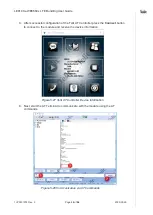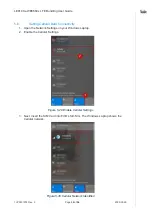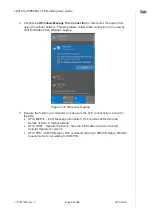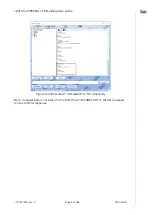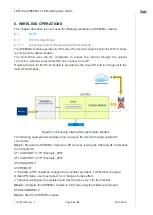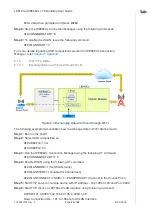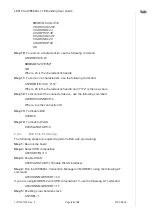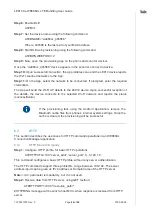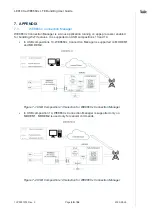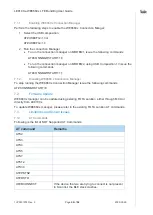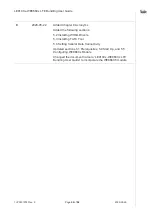
LE910Cx-WE866Cx LTE Bundling User Guide
1VV0301578 Rev. 9
Page
47
of
56
2020-05-26
Note:
<extra_header_line> parameter is not used
Step 3:
Read data received from the HTTP server
AT#HTTPRCV=100,0
<maxByte> can specify the number bytes to be read
Step 4:
Send data to HTTP server, using POST method
AT#HTTPSND=101,0,
“
/resource_path/
”
,2048
Note:
<post_param> and <extra_header_line> parameters are not used.
6.3.2.
HTTPS Mode Commands
Step 1:
Configure the HTTPS profile with server CA certificate validation
AT#HTTPCFG=10
1,“server_addr”,“server_port”,
0,,,1,120,1,1
Note:
For WE866Cx Connection Manager, <UNUSED1> parameter can be set to 0 or 1.
<UNUSED1> parameter is considered as a new HTTP configuration “<ssl_verify>”
, and is
used to enable/disable CA certificate validation.
Step 2:
Enable SSL security configuration
AT#SSLEN=101,1
SSL commands support only one <SSId>
value, that is 101.
Step 3:
Store HTTPS server Root CA certificate
AT#SSLSECDATA=101,1,1,4096
Note:
CA certificates in “.PEM” format
only are supported.
Issuing ESC char does not ensure discarding partial inputs. Thereby,
it is advised to delete
the previous CA certificate, before storing another CA certificate.
Step 4:
Configure system time by issuing the below command
AT+CCLK="19/12/06,08:52:00+12"
Note:
+CCLK
command supports only local time zone. The Network Time synchronization
is NOT supported.
Once the HTTPS profile is configured, the GET and POST methods can be tested as
explained in section 6.3.1 HTTP Mode Commands.
6.3.3.
HTTP/HTTPS Server Authentication
To enable the basic server authentication, configure the HTTP/HTTPS profile using the
below command
AT#HTTPCFG=102
,“server_addr”,“server_port”,1,“username”
,
“password”
,0,120,1
Once the profile is configured successfully with server authentication credentials, the GET
and POST methods can be tested as explained in sections 6.3.1 HTTP Mode Commands
and 6.3.2 HTTPS Mode Commands.


